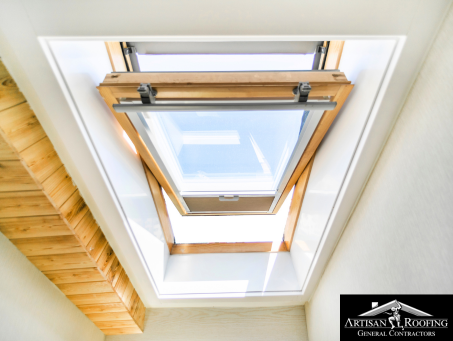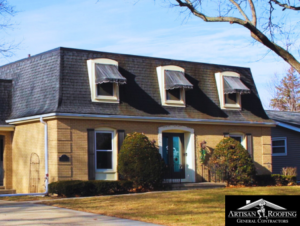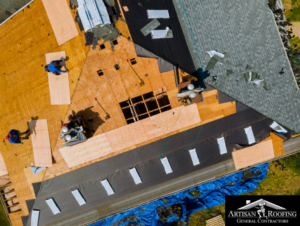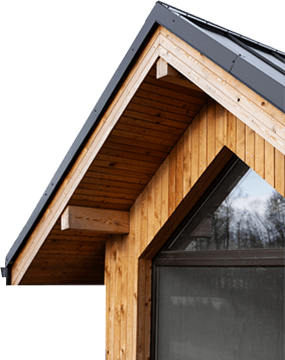Introducing more natural light into your home is one of the most effective ways to enhance comfort, boost mood, and even lower energy costs. While many homeowners consider skylights for this purpose, a sun tunnel—or tubular skylight—often provides a more affordable and efficient alternative, particularly for spaces that don’t easily accommodate windows or large skylights.
With minimal structural changes, a sun tunnel can transform dim, interior rooms like bathrooms, hallways, or closets, making them feel brighter and more inviting.
In this in-depth guide, we’ll cover all you need to know about using sun tunnels to brighten your home—from how they function and the unique advantages they provide to comparisons with skylights, installation insights, and why they’re a smart choice for enhancing natural light in your space.
What is a Sun Tunnel?
A sun tunnel, sometimes called a sunlight tube or tubular daylighting device, is a compact and energy-efficient way to bring natural light into your home. Unlike traditional skylights, which act as roof windows, sun tunnels capture sunlight through a small, clear dome installed on your roof.
This light travels down a highly reflective tube, where it is dispersed into the room through a ceiling fixture, creating soft, even illumination that brightens the space without harsh glare.
Sun tunnels are specifically designed for interior spaces that lack exterior walls or direct sunlight access, such as bathrooms, hallways, closets, and utility rooms. With minimal intrusion and quick installation, they offer a fantastic alternative for homeowners who want to brighten up dark areas of the home without undergoing extensive renovations.
How Do Sun Tunnels Work?
Sun tunnels operate by capturing sunlight on the roof and channeling it down through a reflective tube into your home’s interior. Let’s break down each component and its role in the process:
- Roof Dome
The sun tunnel begins with a small, durable dome mounted on the roof. This dome is crafted from high-quality, impact-resistant materials designed to withstand harsh weather conditions. The dome captures sunlight from various angles, even when the sun is low in the sky, allowing the tunnel to maximize the amount of natural light it gathers throughout the day. - Reflective Tube
Inside the roof, a mirror-like cylindrical tube directs captured sunlight from the rooftop dome down to the ceiling diffuser. The polished surface within the tube enhances the light’s intensity, amplifying even small amounts of sunlight and delivering it efficiently into your space.
Sun tunnels are available in two types: flexible and rigid. We’re going to talk more about them in a bit, but in a nutshell, rigid tubes provide a more direct path and reflect more light, making them ideal for longer distances, while flexible tubes are more versatile for navigating around obstacles.
- Ceiling Diffuser
At the end of the tunnel, a ceiling diffuser spreads the light evenly across the room, creating a soft, natural glow that closely resembles outdoor light.
The diffuser is designed to blend seamlessly with your ceiling, providing an attractive and practical finish that enhances your room’s ambiance without disrupting the aesthetics.
Sun Tunnels vs. Skylights: Which is the Better Choice?
Both sun tunnels and skylights are excellent options for introducing natural light into your home, but they serve different purposes and are best suited for different spaces. Here’s how they compare:
Size and Light Output
Skylights generally allow for more direct light and cover a larger surface area, making them ideal for larger spaces like living rooms, kitchens, or dining areas.
Sun tunnels, on the other hand, are smaller and intended for compact or windowless spaces, such as closets, bathrooms, or hallways, where a full-sized skylight may not be practical.
Cost
Installing a skylight usually involves higher costs due to the labor-intensive framing and materials required.
Sun tunnels are typically more budget-friendly, as they don’t require significant structural changes and can be installed quickly.
Installation Time
Skylights can take multiple days to install, as they often require roof modifications and framing.
By contrast, sun tunnels are usually installed in just a few hours, making them a less disruptive option.
View
One unique feature of skylights is that they offer a view of the sky, which can add an open, airy feel to a room.
Sun tunnels, however, are specifically focused on delivering light and do not offer an outdoor view.
Which Should You Choose?
If you’re aiming to add natural light to small or enclosed spaces, a sun tunnel is generally the better choice due to its affordability, ease of installation, and practicality.
For larger rooms where a view of the outdoors is desirable, a skylight may be a better fit.
Top Advantages of Installing Sun Tunnels
Sun tunnels offer a range of benefits beyond simply brightening a room. Here’s why they’re becoming an increasingly popular choice among homeowners:
- Energy Efficiency
Sun tunnels can greatly minimize your reliance on artificial lighting throughout the day, leading to noticeable savings on your electricity bills.
They don’t generate heat like traditional light bulbs, so your home stays cooler, which in turn can reduce air conditioning usage.
- Improved Mood and Health
Exposure to natural light is linked to better mood, increased productivity, and even improved sleep patterns.
Sun tunnels allow you to enjoy these benefits in rooms that would otherwise be dark, creating a healthier, more pleasant living environment.
- Cost-Effectiveness
Compared to skylights, sun tunnels offer a more affordable solution. The materials and labor involved are usually less expensive, making sun tunnels an attractive option for homeowners who want to enhance lighting without breaking the bank. - Minimal Installation Disruption
One of the greatest advantages of sun tunnels is their quick and non-invasive installation process. Typically completed in a few hours, the installation minimizes disruption and allows you to enjoy a brighter home almost immediately. - Aesthetic Appeal
Sun tunnels are designed to blend seamlessly with your ceiling, preserving the visual appeal of your home’s interior.
Since they don’t alter the roofline significantly, they’re also a great choice for homeowners who prefer subtle changes to their home’s exterior.
- Increased Home Value
Homes with ample natural lighting tend to be more appealing to buyers. Adding sun tunnels can improve your home’s resale value, particularly in rooms that might otherwise be dark or lack natural light.
The Sun Tunnel Installation Process
One of the biggest advantages of sun tunnels is the straightforward installation process. Here’s a step-by-step look at what’s involved:
Choosing the Location
Start by selecting the room where you’d like to introduce natural light. Popular choices often include bathrooms, hallways, and closets—areas that typically benefit the most from added brightness.
Positioning the sun tunnel directly beneath the roof maximizes light efficiency and reduces the amount of tubing needed for optimal brightness.
Cutting the Roof Opening
The installer begins by cutting a small hole in the roof to accommodate the dome. The hole size depends on the tunnel’s diameter. The dome is securely installed and sealed to ensure it’s watertight and resistant to elements like rain and wind.
Installing the Reflective Tube
Next, the reflective tube is fitted between the roof and ceiling. If there’s a straight, unobstructed path, a rigid tube is usually the best choice, as it reflects more light. For installations where there are obstacles, flexible tubes provide more versatility.
Setting Up the Ceiling Diffuser
The ceiling diffuser is installed as the final component, distributing light evenly across the room and eliminating bright spots or glare. Designed to blend into the ceiling, the diffuser provides a smooth finish and a soft, even glow.
Final Adjustments and Sealing
Lastly, the installer inspects the system to ensure everything is properly sealed and functioning. They may make small adjustments to maximize light quality and ensure the best possible brightness for your room.
Types of Sun Tunnels: Rigid vs. Flexible
When selecting a sun tunnel, you’ll need to choose between rigid and flexible tubes, each offering unique benefits depending on your home’s layout and the distance the light needs to travel.
Rigid Sun Tunnels
Rigid tubes are ideal for longer distances between the roof and ceiling, as they provide excellent light reflection with minimal light loss. If there is a direct path from roof to ceiling, a rigid tube is usually preferred for its efficiency and brighter light output.
Flexible Sun Tunnels
Flexible tubes are best for shorter distances and areas where obstructions prevent a straight path. While they may reflect slightly less light than rigid tunnels, they offer greater flexibility in positioning and are easier to install around obstacles.
Sun Tunnel Maintenance and Longevity
Sun tunnels are low-maintenance, but here are a few tips to ensure they function optimally for years:
- Clean the Roof Dome Regularly. Remove any dust, leaves, or debris from the dome periodically to maximize sunlight intake.
- Inspect the Diffuser. Occasionally wipe down the ceiling diffuser to keep the light clear and bright.
- Check for Leaks. Although sun tunnels are designed to be watertight, it’s wise to check for signs of leakage after severe weather.
When properly maintained, sun tunnels can last for over 20 years, making them a long-term, low-maintenance investment in your home’s comfort and energy efficiency.
Final Thoughts: Why a Sun Tunnel Might Be Perfect for Your Home
For homeowners looking to brighten spaces that lack windows, sun tunnels offer an efficient, affordable, and attractive solution. They bring the benefits of natural sunlight into your home, helping reduce energy costs, enhance the atmosphere, and even increase your home’s resale value.
Whether you’re updating a bathroom, illuminating a hallway, or brightening up a closet, a sun tunnel provides a smart, long-lasting option that enhances your home without requiring major renovations.
By adding sun tunnels, you’re not just improving your home’s aesthetics—you’re also creating a healthier, more energy-efficient living space. So, if you want to experience the uplifting effects of natural light in every corner of your home, a sun tunnel could be the perfect addition to your home improvement plans.
Feel free to get in touch with us here at Artisan Roofing for more information on our services. See you in the next blog!






